This phenomenon is very common and negatively affects the quality of life, so you need to talk more about the types of disease, symptoms, causes and treatments.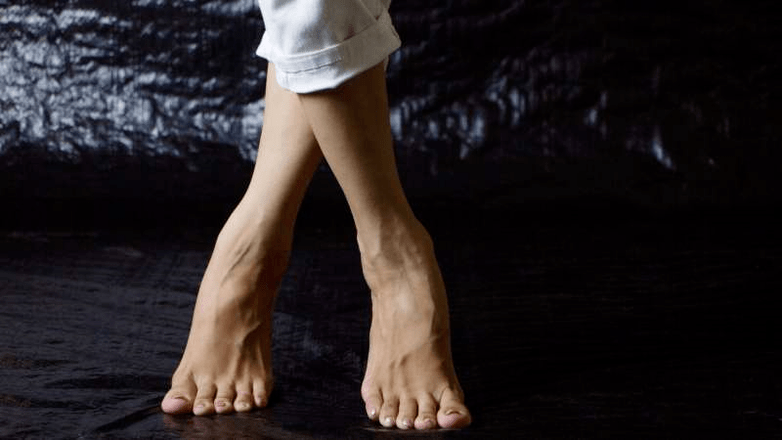 What is Valgus deformation?
What is Valgus deformation?
Valgus deformity of the stop is an orthopedic pathology in which the deformation of the plus -the volatile joint of the first finger occurs. With it, the first (large) toe gradually deviates outwards, other toes deform. The most characteristic characteristic of the disease is the development of exophytes (bone growth), the leg increases in the transverse size, bending inside. The diagnosis is made when several indicators change at once: the most characteristic characteristic of the disease is the development of exophytes.Reasons, mechanism
With the deformation of the foot, the joint biomechanics are disturbed and the bone of the plush appears, leading to the curvature of the foot. The weakness of the connecting tissues of the legs is to blame for deformation of valgus. With the deformation of the foot, the joint biomechanics are disturbed and the bone of the plush appears, leading to the curvature of the foot. The thumb can no longer look inside and deviates.
In addition, the patient expects inflammatory processes in which bone sill, bursitis and changes in bone tissue are observed in the area of 1 plus bone (his head). All this leads to joint wear, arthritis and arthrosis. All this is complicated by the development of calluses and calves.
Reasons:irregular shoes (high heels and its absence, short or small shoes, narrow finger);flat legs;hypermobility of the joints of the foot;short calf muscles;genetics and heredity;osteoporosis;working conditions (those forced to stand for a long time); disorders of the endocrine system;Excess weight.Types
There are the following varieties of valgus deformation of the foot:The static deformity is combined with flat legs and occurs as a result of the curvature of the spine. Treatment should start with back treatment.The cause of the structural deformation of Valgus on the foot is a congenital anomaly of leg development.The cause of the paralytic species is encephalitis or polio.Rachitic develops as a result of a lack of vitamin D and other substances. It is also possible due to a violation of mineral metabolism.Traummatically occurs after tearing of ligaments or fracture.Spastic deformity develops due to muscle cramps.With the compensator, the tendons are shortened and the shape of the ankle joint changes.The hyperco -reconstruction develops after improper Clubfoot therapy.With the deformation of the Equino-Planning foot, the gait is broken, the sole is very curved inwards and after a long time the person experiences severe pain. This disease develops as a result of cerebral palsy and is common in infants.When installing a flat valgus foot, it does not have a transverse and hollow arrangement.The fifth Valgular type deformation develops due to the incorrect location of the foot directly into the mother in the womb. The front of the foot is very distributed and the fifth fuses with the lower leg.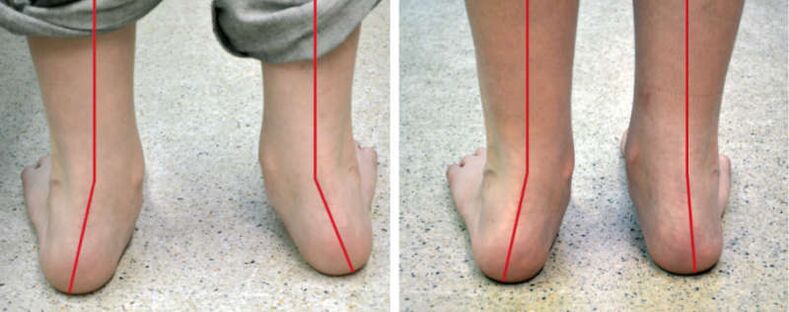 Symptoms in different stages
Symptoms in different stages
The disease develops slowly, but constantly, therefore, at different stages of valgus deformation of the foot, the symptoms will differ.
At an early stage there is:painful sensations when wearing some types of shoes (with long finger or tight shoes);Redness of the skin in the area of convex seeds.
On the 2nd stage there is:inflammatory processes in the joints;pain;swelling;The growth becomes more noticeable.
Stage 3:The pain becomes exhausting and acute;There are calluses or keratinized skin in the foot;There is deformity of all the toes and joints of the foot.Diagnostics
The main diagnostic methods for determining the deformation of the valgus of the foot are:Clinical examination. The orthopedist will evaluate the level of toes and heels abnormalities, insofar as the arches of the legs are smoothed and how much it moves inside, plus the presence of edema.X -ray. It is performed and immediately in 2 projections. Allows you to accurately evaluate all the angles between the joints.Ultrasound.Platoography. It will help to determine how large the load of the foot and the stage of the flat feet is.Computer analysis. Otherwise, a computer study of the foot is called postmometry and allows you to determine the pressure on your feet.Treatment in children and adults
If the deformity is not too neglected, conservative treatment is used.Medical physical education
It is best to do it in the hospital, but you can at home. It strengthens the foot and helps to properly distribute the load of the foot, plus improves blood circulation and does not allow edema to develop. The complex recommends an orthopedist or you can handle the video.
Here are the most effective exercises:
Exercise bicycle is effective for the press and hips but will help the legs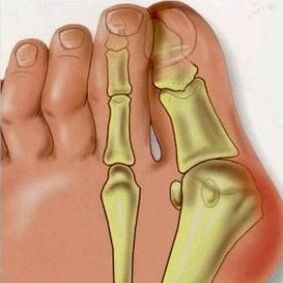 A motor. It is effective for the press and hips, but will help the legs. When you move your foot away from yourself, pull your leg forward as you pull your legs on yourself.Sitting on the floor. We perform on the basis of the floor with your hands. We bend 8 times and expand our legs in the ankle, spread its fingers wide and return them to I. p. Effective compression and excavation of the toes 6 times.In the chair. We move our feet only with our toes forward and back. You can tighten the pencil to 1st and 2 fingers and draw them on Whatman what you like.We stretch straight legs on a chair in a chair and pull the ankle on us until it stops. We bend it and 1 finger maximum. After the step, we extend from ourselves and bend the toes as far as possible. For children, socks will rise, walking on the inside of the foot will be effective.
A motor. It is effective for the press and hips, but will help the legs. When you move your foot away from yourself, pull your leg forward as you pull your legs on yourself.Sitting on the floor. We perform on the basis of the floor with your hands. We bend 8 times and expand our legs in the ankle, spread its fingers wide and return them to I. p. Effective compression and excavation of the toes 6 times.In the chair. We move our feet only with our toes forward and back. You can tighten the pencil to 1st and 2 fingers and draw them on Whatman what you like.We stretch straight legs on a chair in a chair and pull the ankle on us until it stops. We bend it and 1 finger maximum. After the step, we extend from ourselves and bend the toes as far as possible. For children, socks will rise, walking on the inside of the foot will be effective.
It will be useful to walk on any ribbed surface, sand, pebbles (not -fast) and right on a narrow path. Scooter and bicycle will be useful for children because they strengthen the muscles and joints of the foot. Swimming is also able to strengthen the muscles of the foot and improves blood circulation in it.Orthopedic devices
Different devices are used here, but they are only chosen with an orthopedist:Orthopedic shoes. Such shoes should have a solid and high shore and a special heel, long on the inside. It should also have a great disclosure, which allows you to wear it with other devices (cooators and locks). Layers. They can be summoned by sale by concealers. Plaluks prevent the development of deformities, reducing friction and pressure and do not allow fake joint positions to form. Made of silicone. Tires. Sometimes they avoid surgery, but with advanced stages are not recommended. They fix the joints tightly and allow it to be constantly in a calm state, to relax the muscles and to prevent swelling. All this allows the joint to take on a healthy and proper shape. Dressings. They are used for Holus Valgus, which is similar to tires, but they are softer.Supinators. So otherwise they call orthopedic insoles. These are mechanical supports that adjust the distribution of the load on the legs and the fixing joints. Valgus deformation can be used transverse, transverse and frame supervisors. Interlacing partitions. They can be called seals, rollers or separators. It facilitates the condition and warns the deformation, but they cannot be healed dramatically. Normalize the gait. They can be with locks made of gel or silicone. Ortes and teachers. Such products are required by deformation of valgus at the bottom or knees. Their task is a firm fixation of the legs. The Heradas on sale can also be called insoles that are written above.Massage carpets. They perform the same functions as all uneven surfaces that are recommended to walk during the disease. Improve blood flow, prevent swelling, relieve pain. Physiotherapy
Its task is to relieve the symptom of pain, prevent stagnant processes in the foot, improve blood circulation and relieve inflammation with swelling: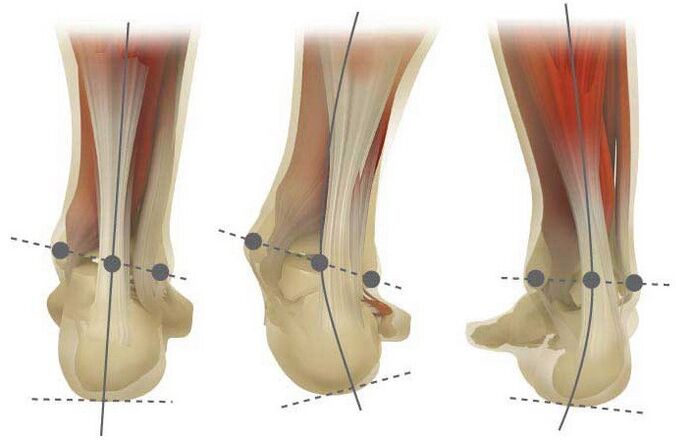 Electrophoresis is performed with calcium preparations, chondroitin with glucosamine, anti -inflammatory drugs and analgesicsDiadinamotherapy. This treatment with electrical currents (frequency 50-100 Hz. ). Relieves pain has a myostimulatory effect, improves joint nutrition. Bifuried electrodes are used in the treatment of joints. It is contraindicated in fever, hypertension, asthma, epilepsy, radiculitis and neuritis, injuries. Electrical stimulation. The effect of impulse currents with different indicators allows you to train and strengthen the deepest muscles. Therefore, the foot is intensified. It is done by applying electrodes to the skin. Duration - not more than 2/3 hours the course is up to 30 procedures. The contraindications are the same as the Diadime Therapy plus skin damage.Electrophoresis. In this disease, electrophoresis is performed with calcium preparations, chondroitin with glucosamine, anti -inflammatory drugs and analgesics. There are no contraindications, but you should choose the right medicine.Magnetotherapy. It stimulates all cells and accelerates the metabolic processes in the joint used as an auxiliary agent. The electromagnetic field stimulates nerves and muscles.Mud applications. Relieve inflammation, swelling and pain. The mud can be Sapropelia, Hydrothermal and Peat, volcanic and sopom. It is applied to the legs in the form of "socks" and covered with fabric. Contraindicated in skin injuries and diabetes.Ozokerite. It warms and nourishes the joints, stops inflammation. Used in the form of bathrooms or "boots".Paraffin applications. The paraffin is laid on inflamed legs. Below it, they can apply anti -inflammatory ointment. Relieve from inflammation and pain, improve blood supply. The contraindications are the same as in the treatment of mud and ozkerite.Night Baths. Relax the muscles of the foot, relieve pain and inflammatory processes. The most application for baths salt and dirt.Acupuncture. This will help to eliminate some causes of the development of deformity of the feet if it is caused by any disease of the nervous system or endocrine: you only have to act properly on the right points.Work
Electrophoresis is performed with calcium preparations, chondroitin with glucosamine, anti -inflammatory drugs and analgesicsDiadinamotherapy. This treatment with electrical currents (frequency 50-100 Hz. ). Relieves pain has a myostimulatory effect, improves joint nutrition. Bifuried electrodes are used in the treatment of joints. It is contraindicated in fever, hypertension, asthma, epilepsy, radiculitis and neuritis, injuries. Electrical stimulation. The effect of impulse currents with different indicators allows you to train and strengthen the deepest muscles. Therefore, the foot is intensified. It is done by applying electrodes to the skin. Duration - not more than 2/3 hours the course is up to 30 procedures. The contraindications are the same as the Diadime Therapy plus skin damage.Electrophoresis. In this disease, electrophoresis is performed with calcium preparations, chondroitin with glucosamine, anti -inflammatory drugs and analgesics. There are no contraindications, but you should choose the right medicine.Magnetotherapy. It stimulates all cells and accelerates the metabolic processes in the joint used as an auxiliary agent. The electromagnetic field stimulates nerves and muscles.Mud applications. Relieve inflammation, swelling and pain. The mud can be Sapropelia, Hydrothermal and Peat, volcanic and sopom. It is applied to the legs in the form of "socks" and covered with fabric. Contraindicated in skin injuries and diabetes.Ozokerite. It warms and nourishes the joints, stops inflammation. Used in the form of bathrooms or "boots".Paraffin applications. The paraffin is laid on inflamed legs. Below it, they can apply anti -inflammatory ointment. Relieve from inflammation and pain, improve blood supply. The contraindications are the same as in the treatment of mud and ozkerite.Night Baths. Relax the muscles of the foot, relieve pain and inflammatory processes. The most application for baths salt and dirt.Acupuncture. This will help to eliminate some causes of the development of deformity of the feet if it is caused by any disease of the nervous system or endocrine: you only have to act properly on the right points.Work
With too neglected deformation of the legs and overgrown exophyte, surgery is the only effective method. About a hundred types of operations are used to treat deformation today.
The most effective are:
Recovery begins on the second day when the operated is allowed to move fingersSurgical growth removal (minus is that it can grow again);Balancing the periararticular muscles;Operation for reconstruction of deformed bones;Joint fixation - atodesis;Work to restore connections and their correct location;Implantation of the joint or tendon;Working when cutting the heads of plus bones - exostamics;The surgery to change the angle between the bones and the removal of the phalanx or plus is an osteotomy. May be hevarin, proximal or distal;Dozens of other operations.
Recovery begins on the second day, when the operated is allowed to move your fingers. After 1, 5 weeks you can start walking, but you cannot go to cooperation.
It is possible to give a load to the leg after 4-5 weeks. After 6 months you can wear heels and start sports.
During rehabilitation, it is recommended to undergo shock wave therapy, which improves blood circulation in the tissues and reduces edema. The methods of physiotherapy described above will be useful. Folk methods of treatment
It is not the best method for correction of valgus deformation of the feet and get rid of the bone. But you can try.
Compresses are popular.
They use iodine, cabbage leaf, fish (river), aspirin, turpentine, snow, castor oil:The green sheet can be applied to the affected joint, wrapped in a scarf and went to bed.The turpentine is first rubbed into the skin after warming the legs and goes to bed.Iodine bathrooms. A teaspoon of iodine per liter of water is required. Lay your legs 1/3 hours and grind well.
But practice shows that folk treatment of valgus curvature is ineffective and can harm.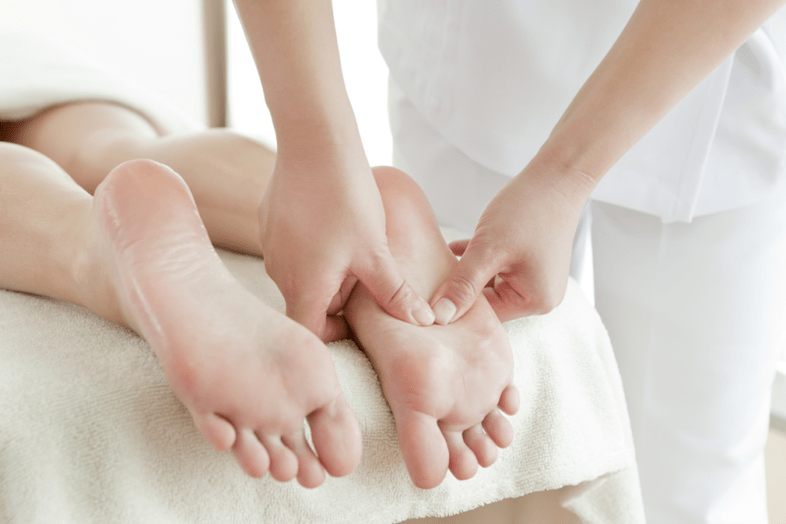 Prevention
Prevention
The recurrences in this disease occur because the weakness of the relationships and muscles is not so simple.
Prevention includes:Wearing the right shoes: natural, no tight sock and a small heel;Treatment of flat legs on time;Rest to your feet;load control;relaxing baths;Orthopedic insoles or supervisory authorities.What should be shoes?
It is better to order orthopedic shoes in special stores and after consulting an orthopedist.
Shoes should be:soft;The socks must be wide;Kabluk is required - up to 4 cm. ;The background and manager should be dense and high (background height - 3 cm from the heel).




























